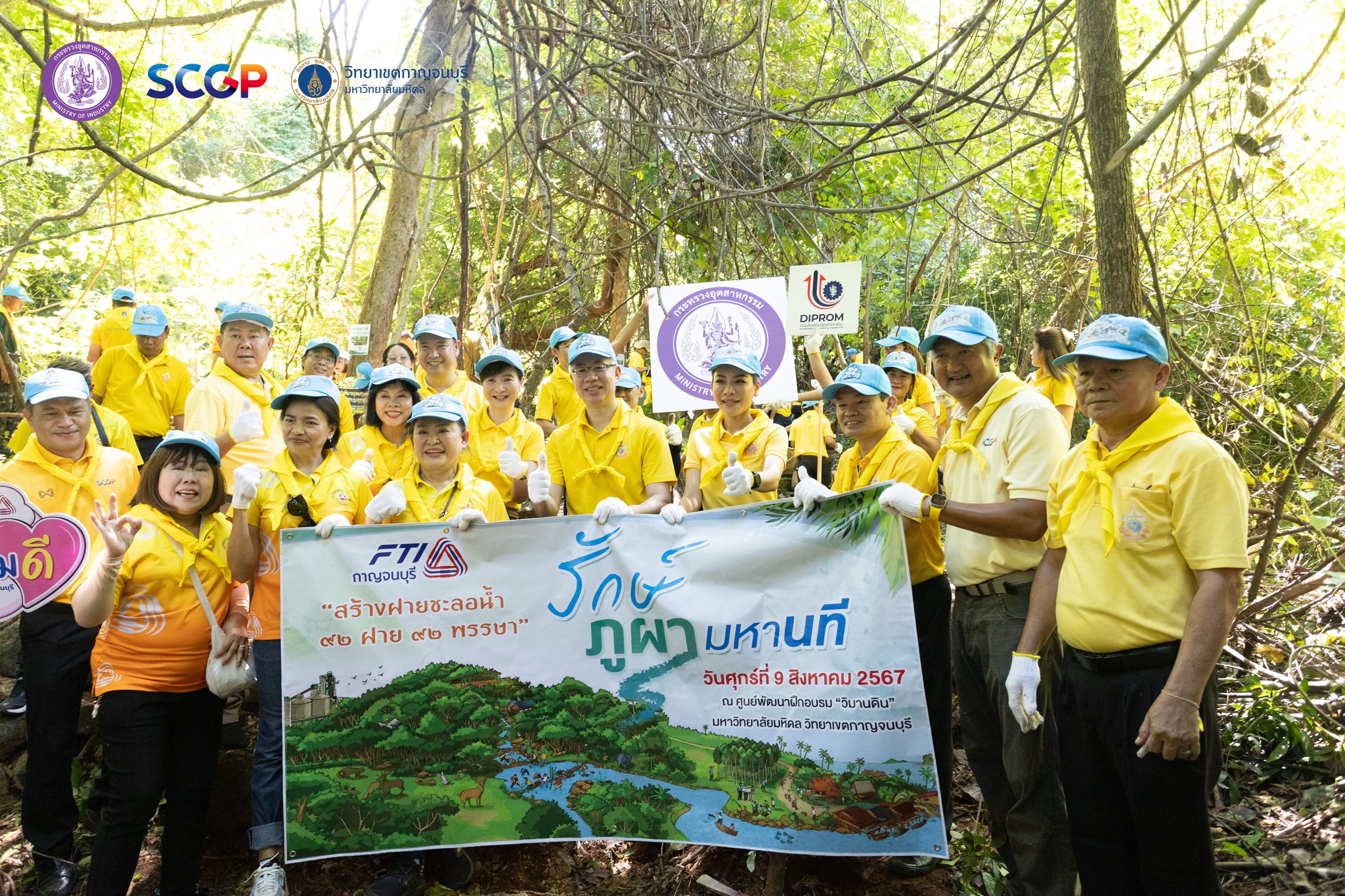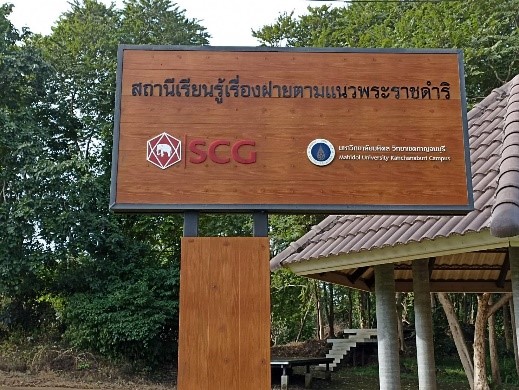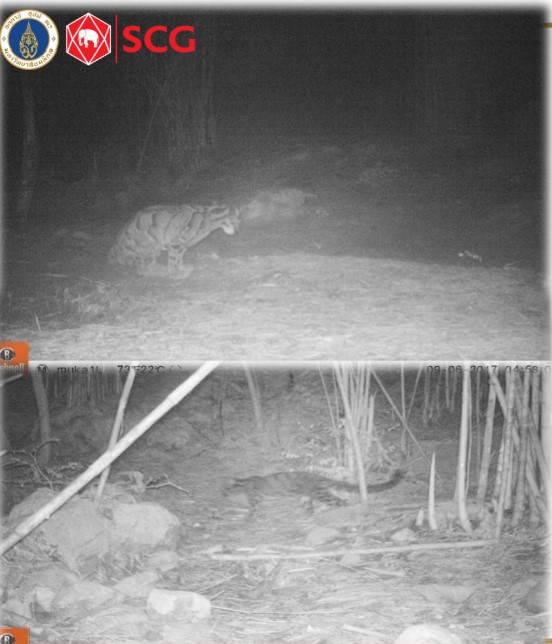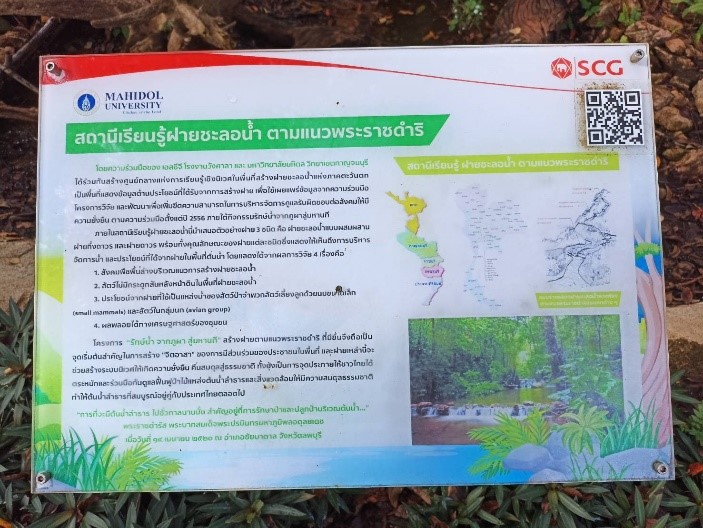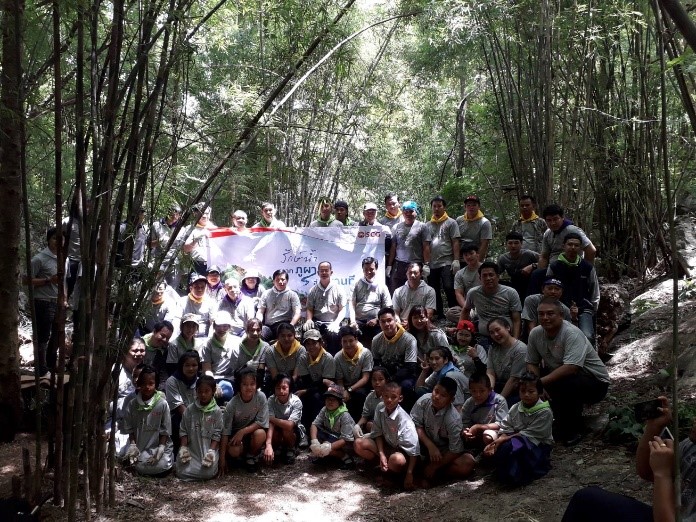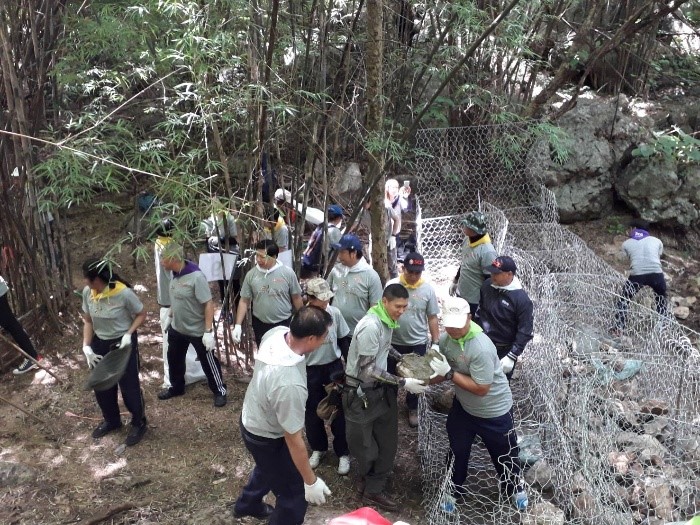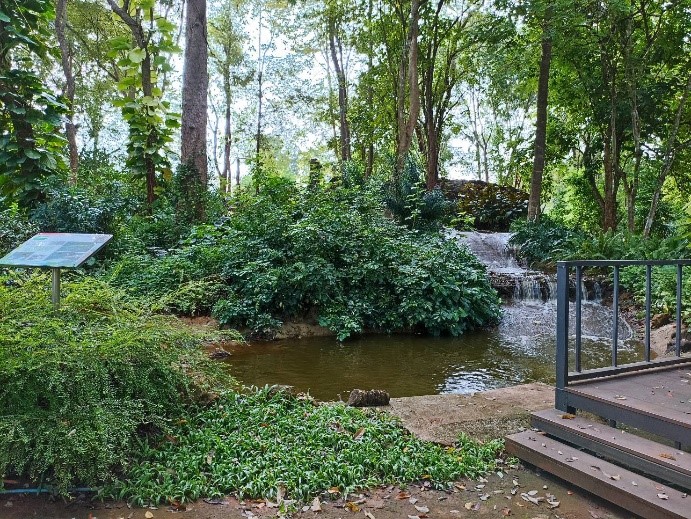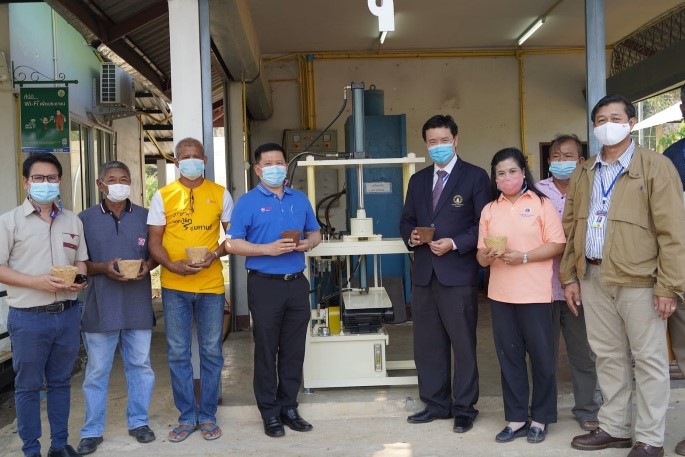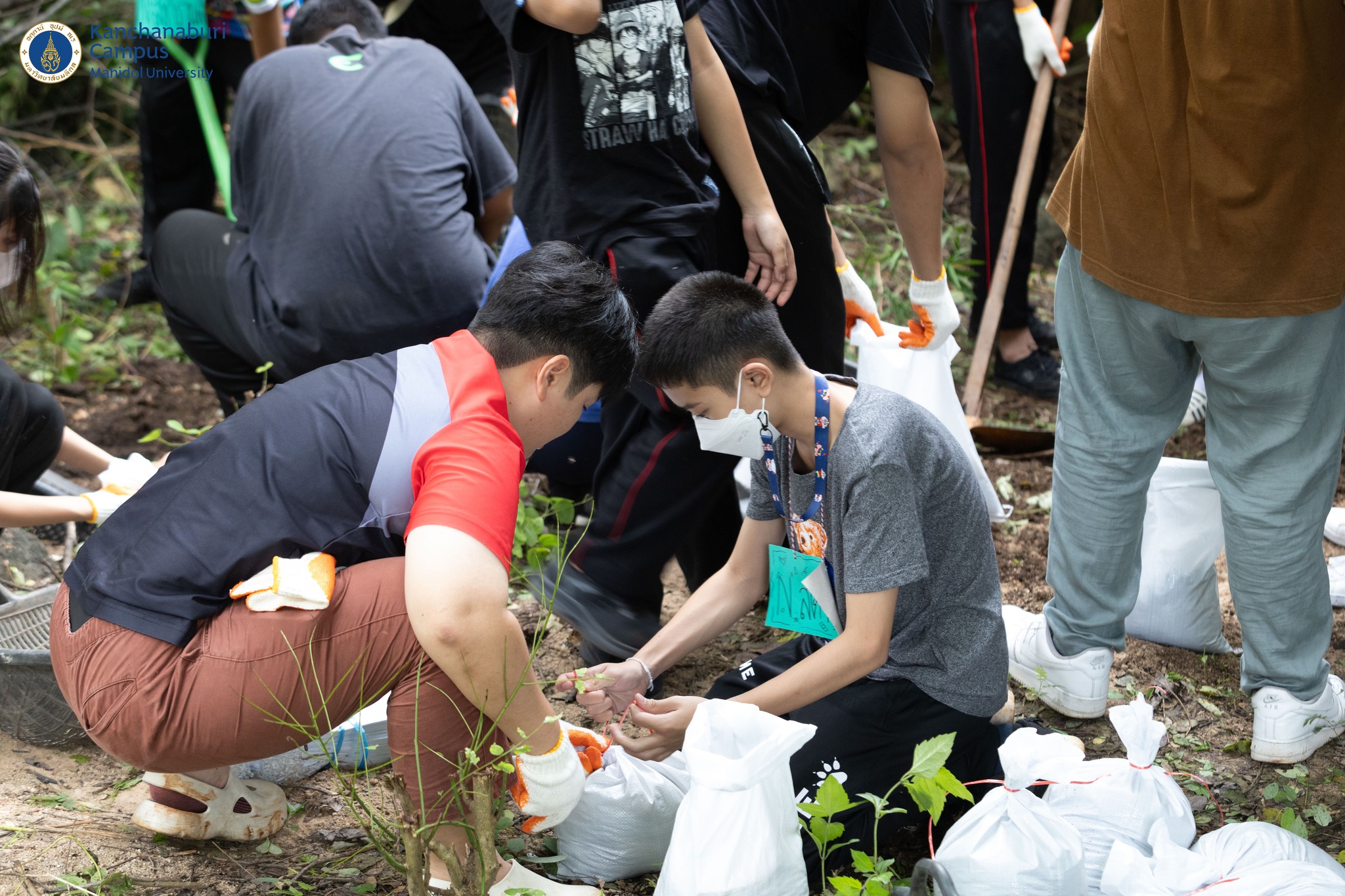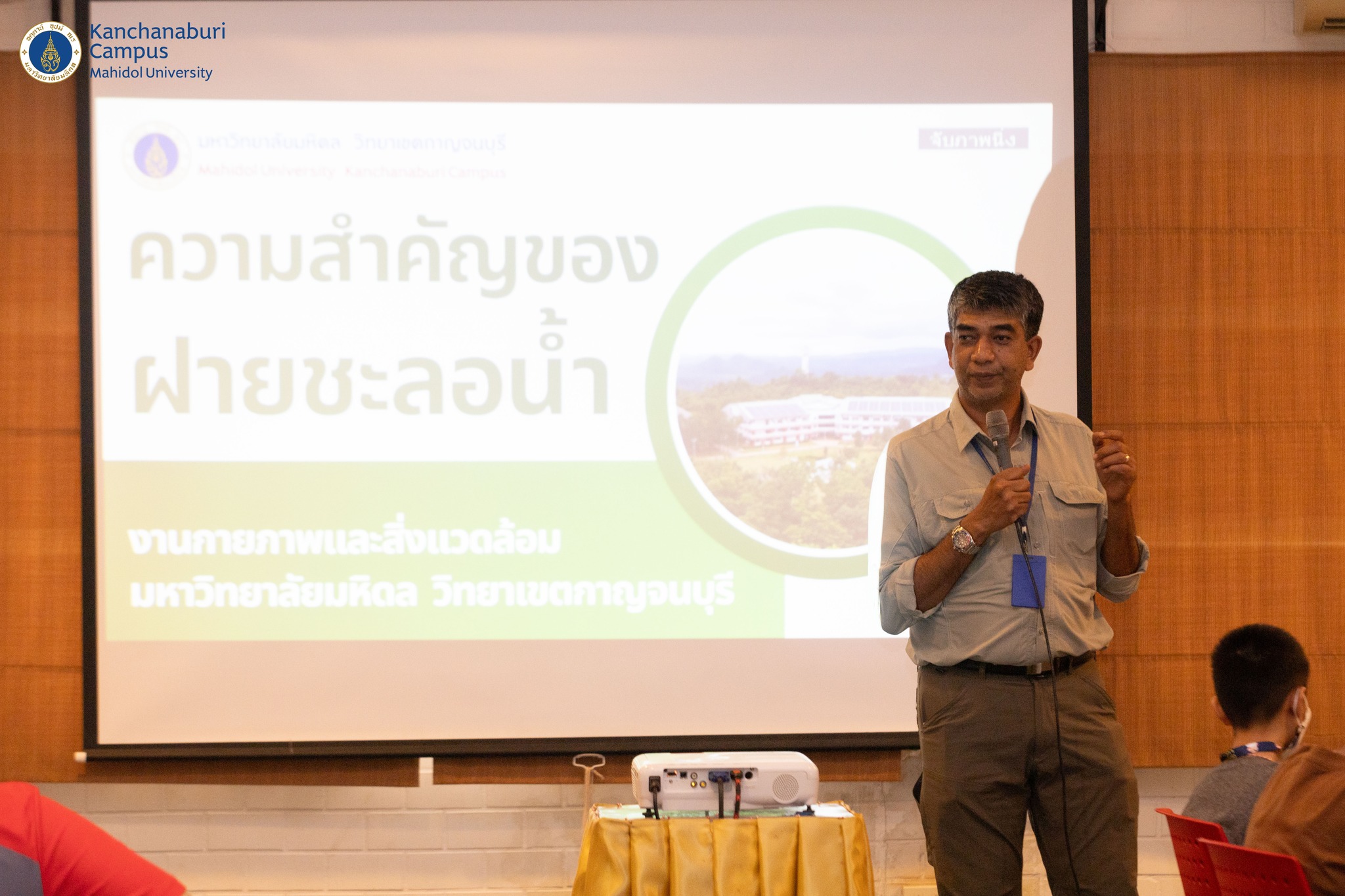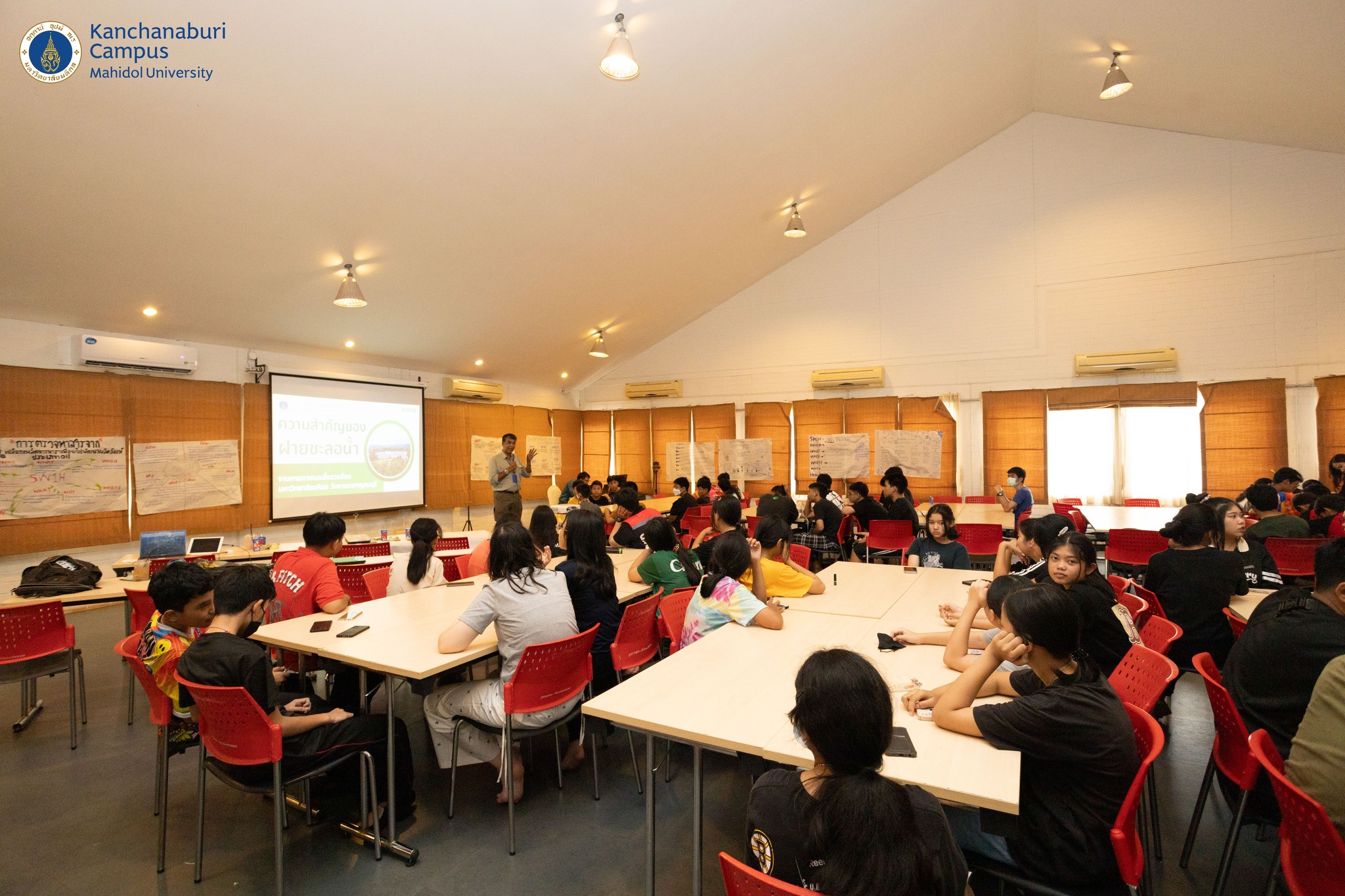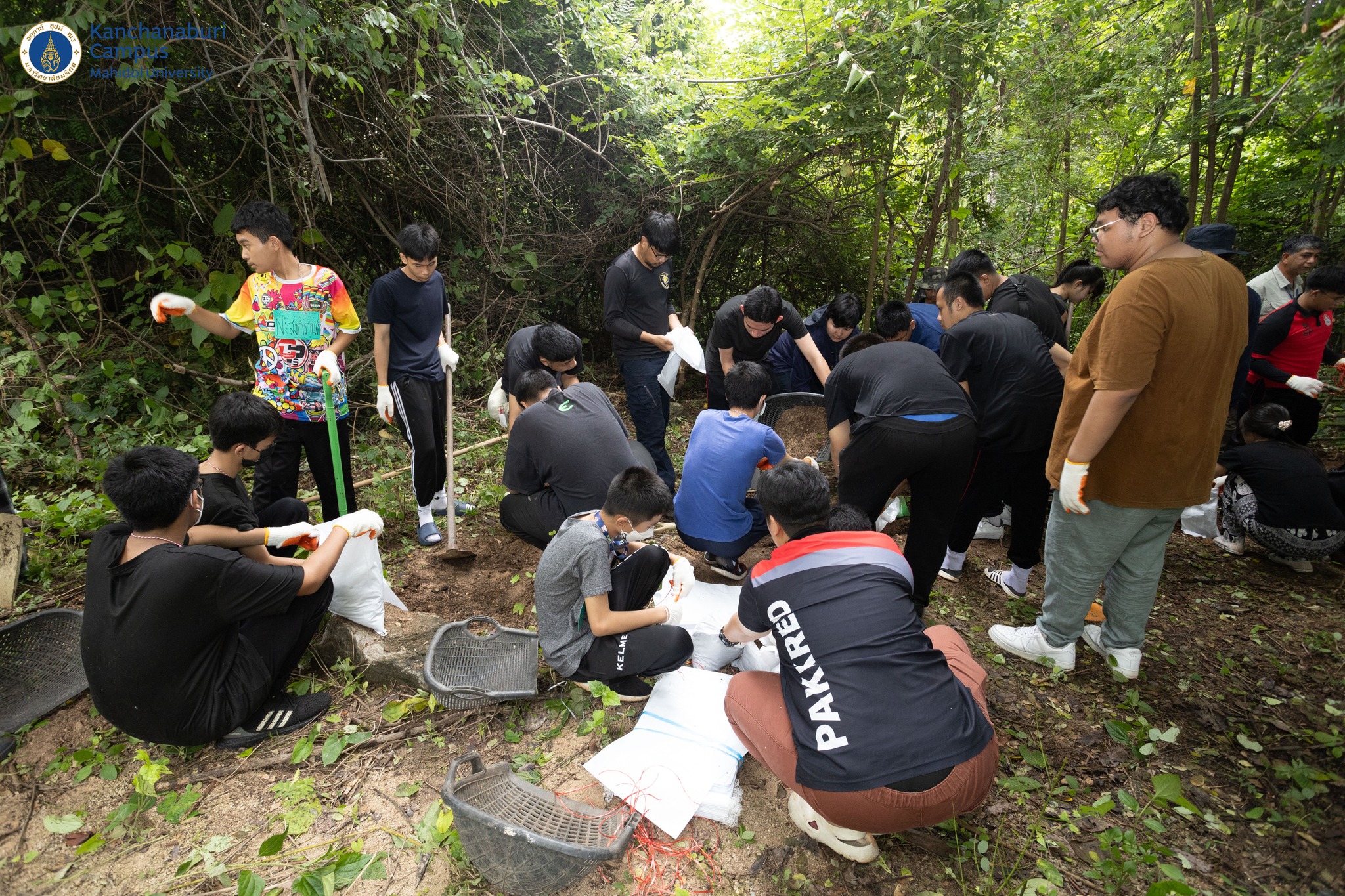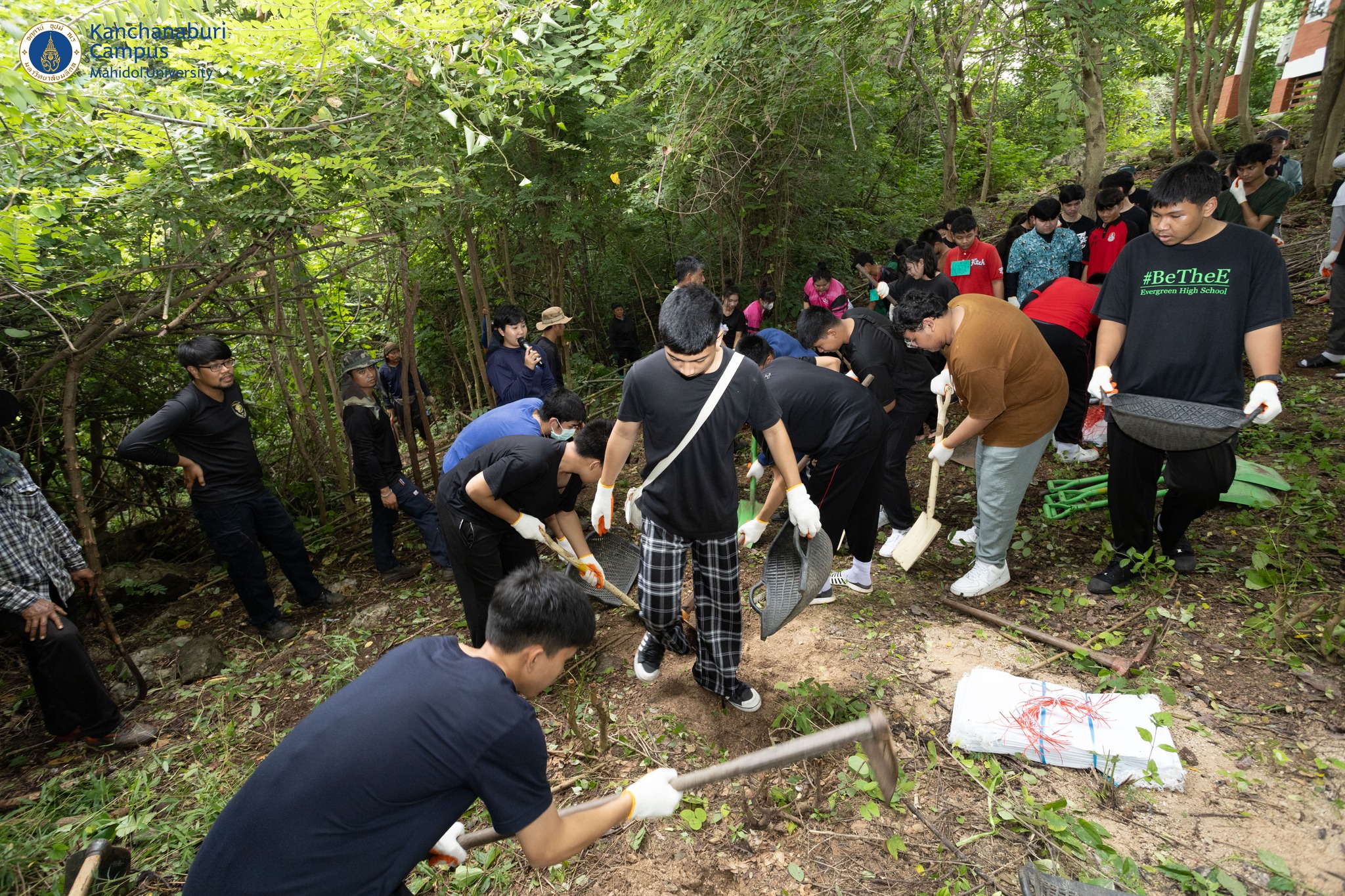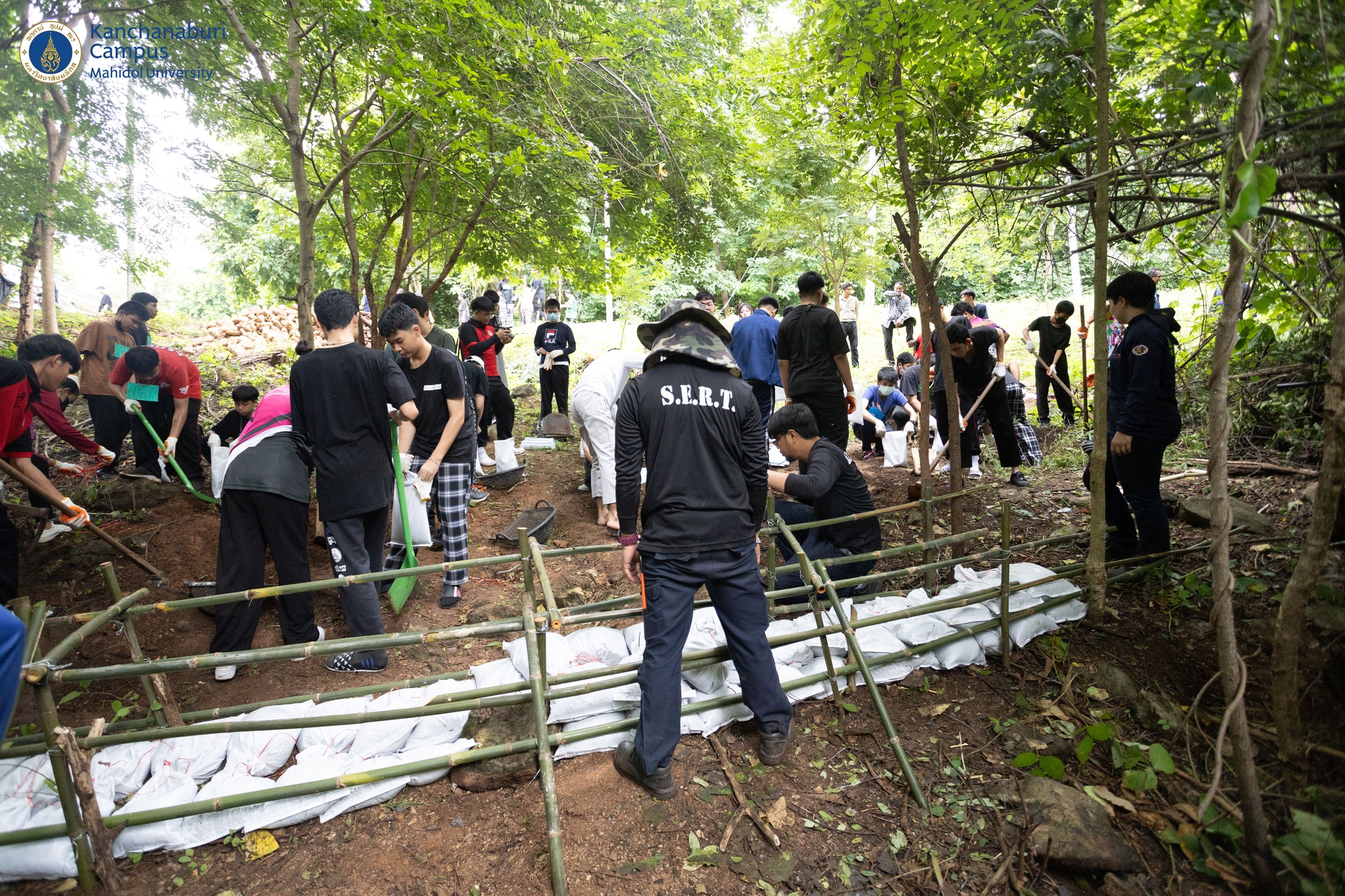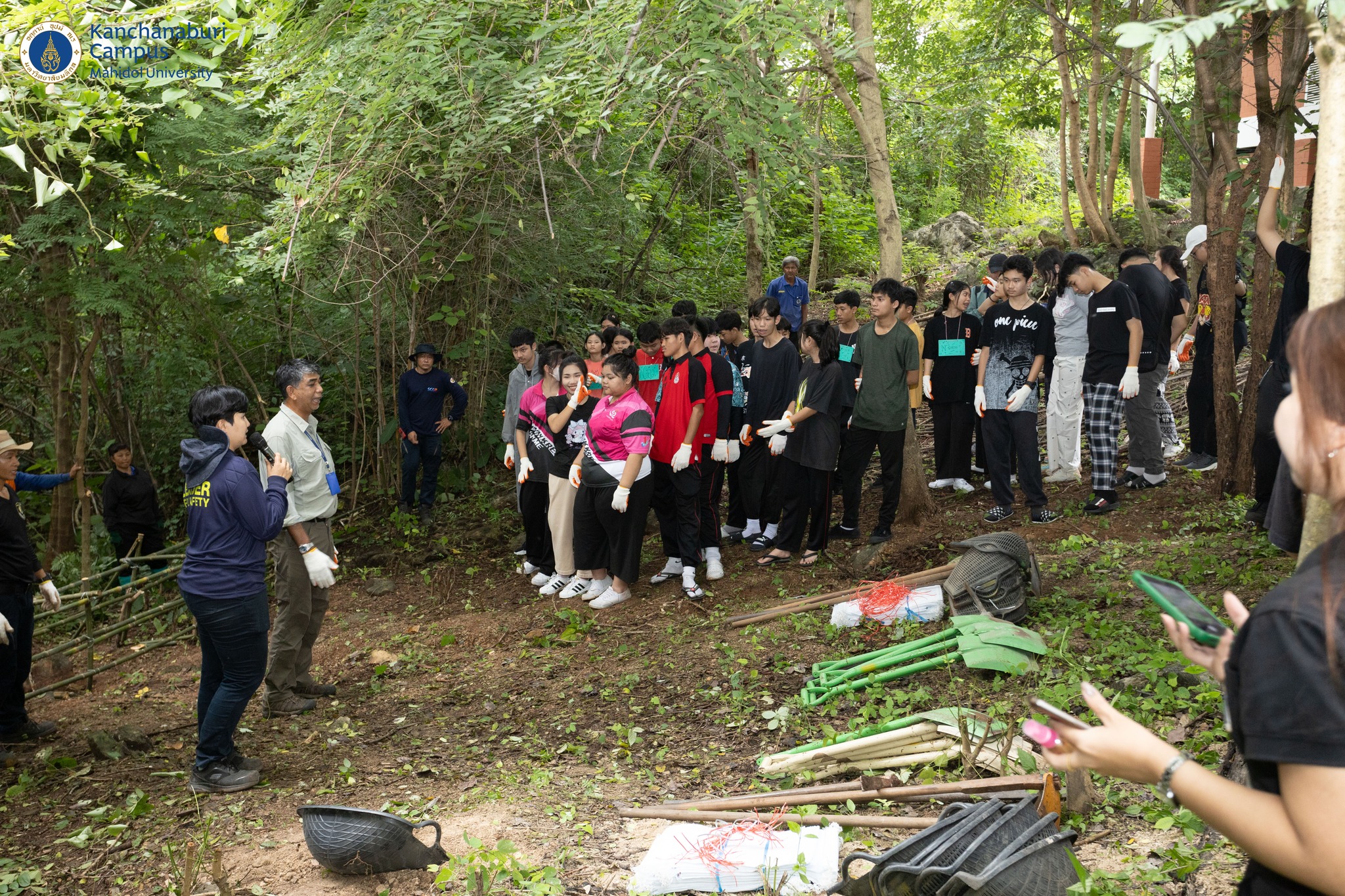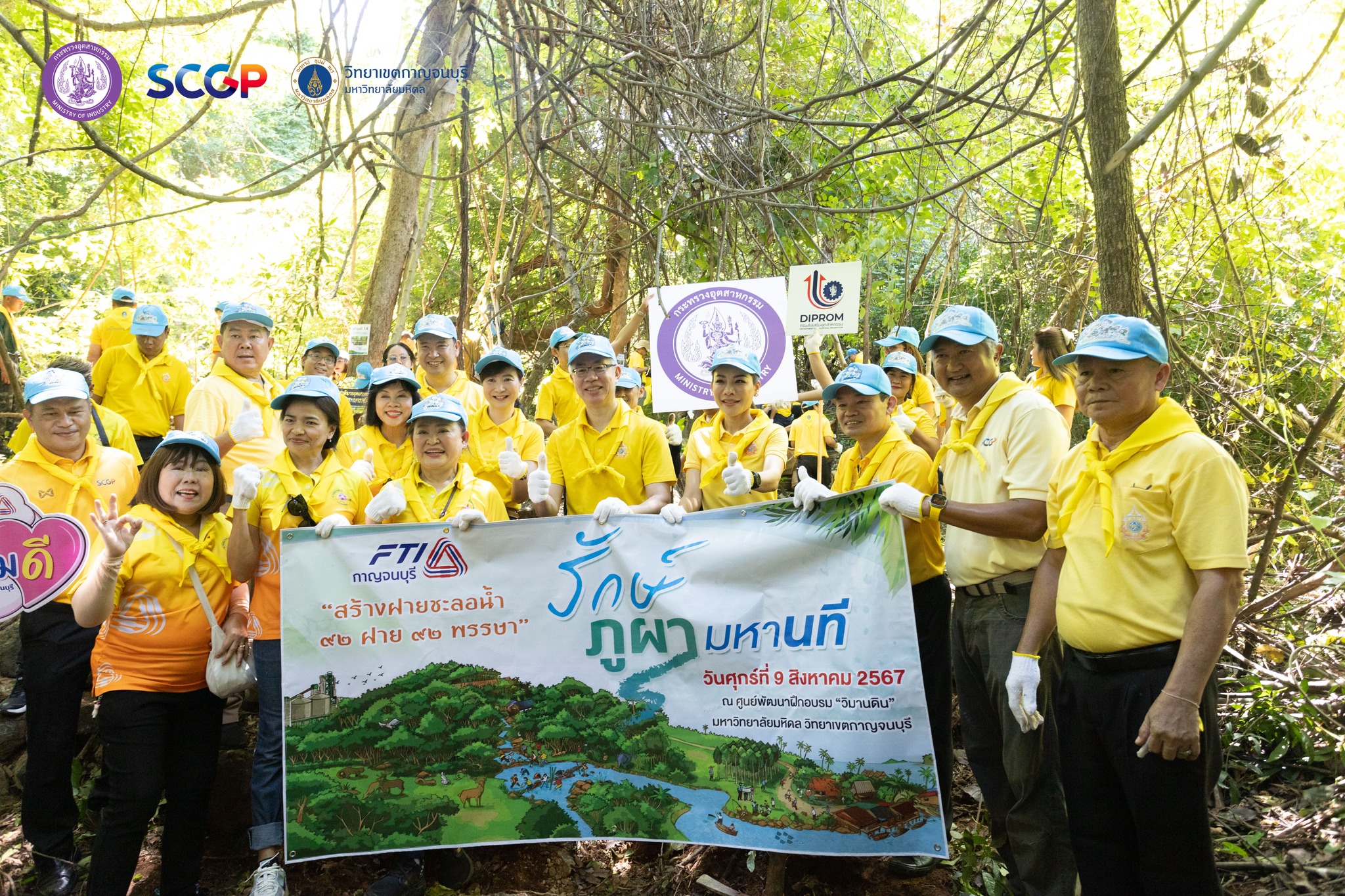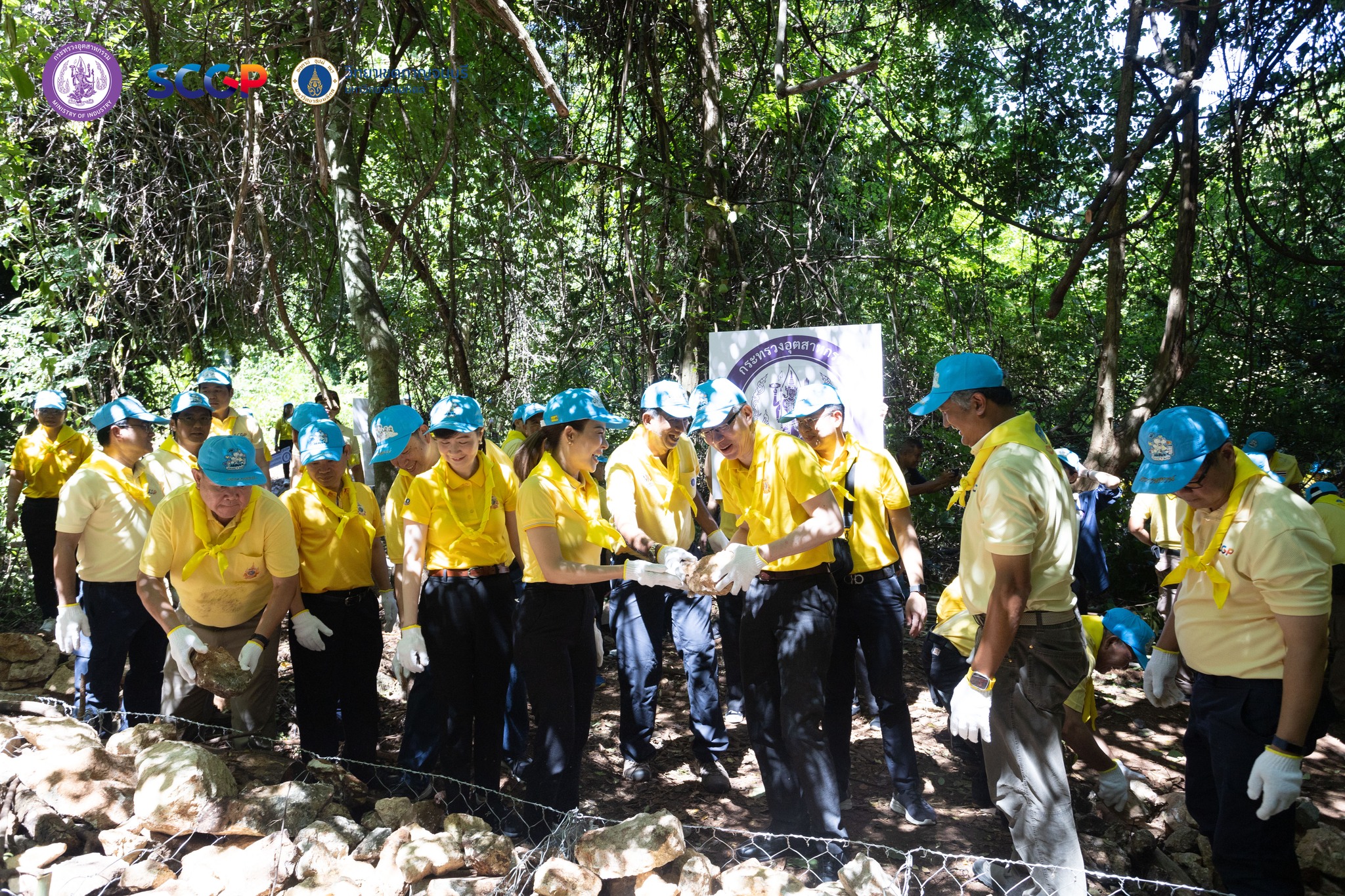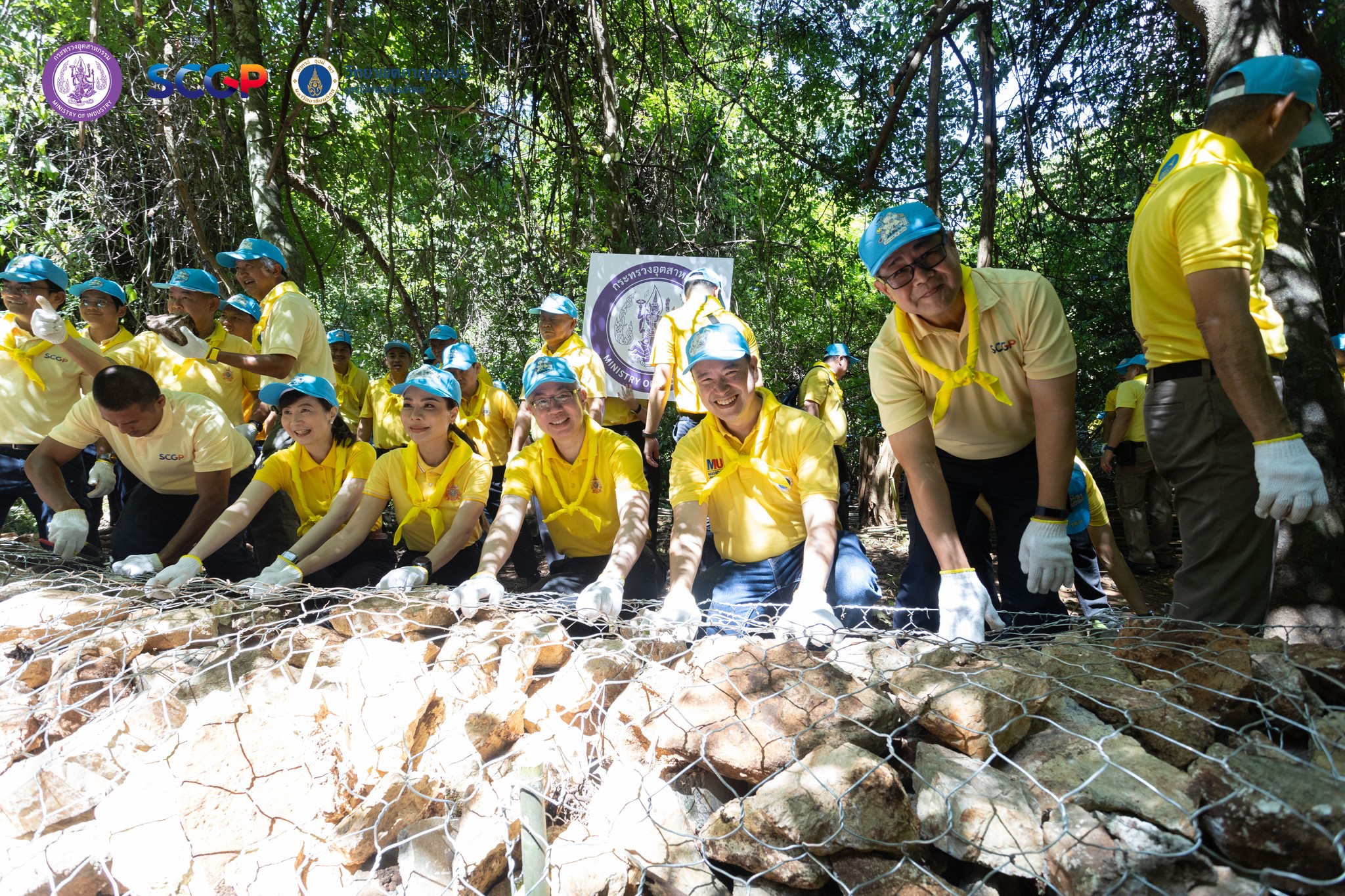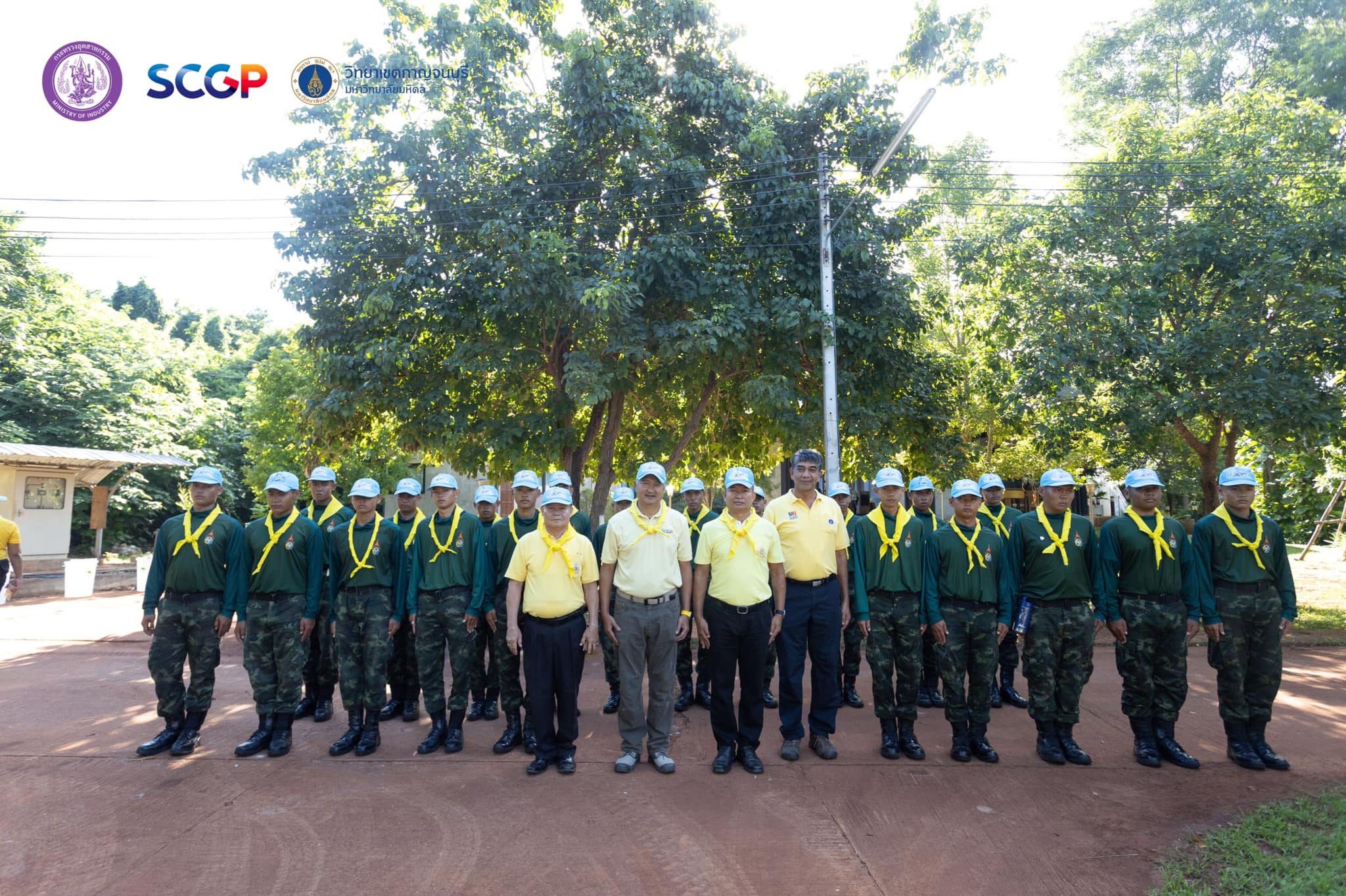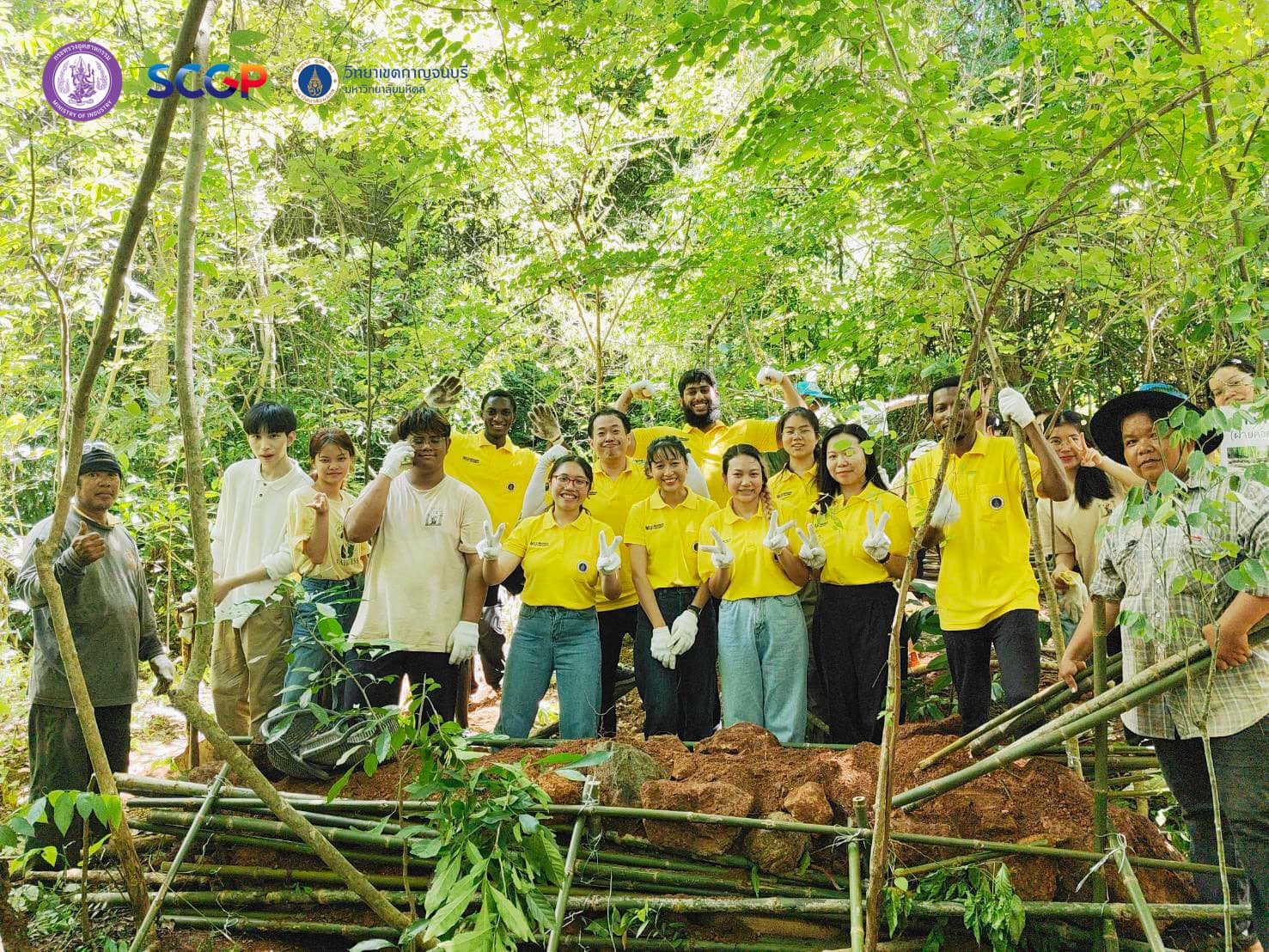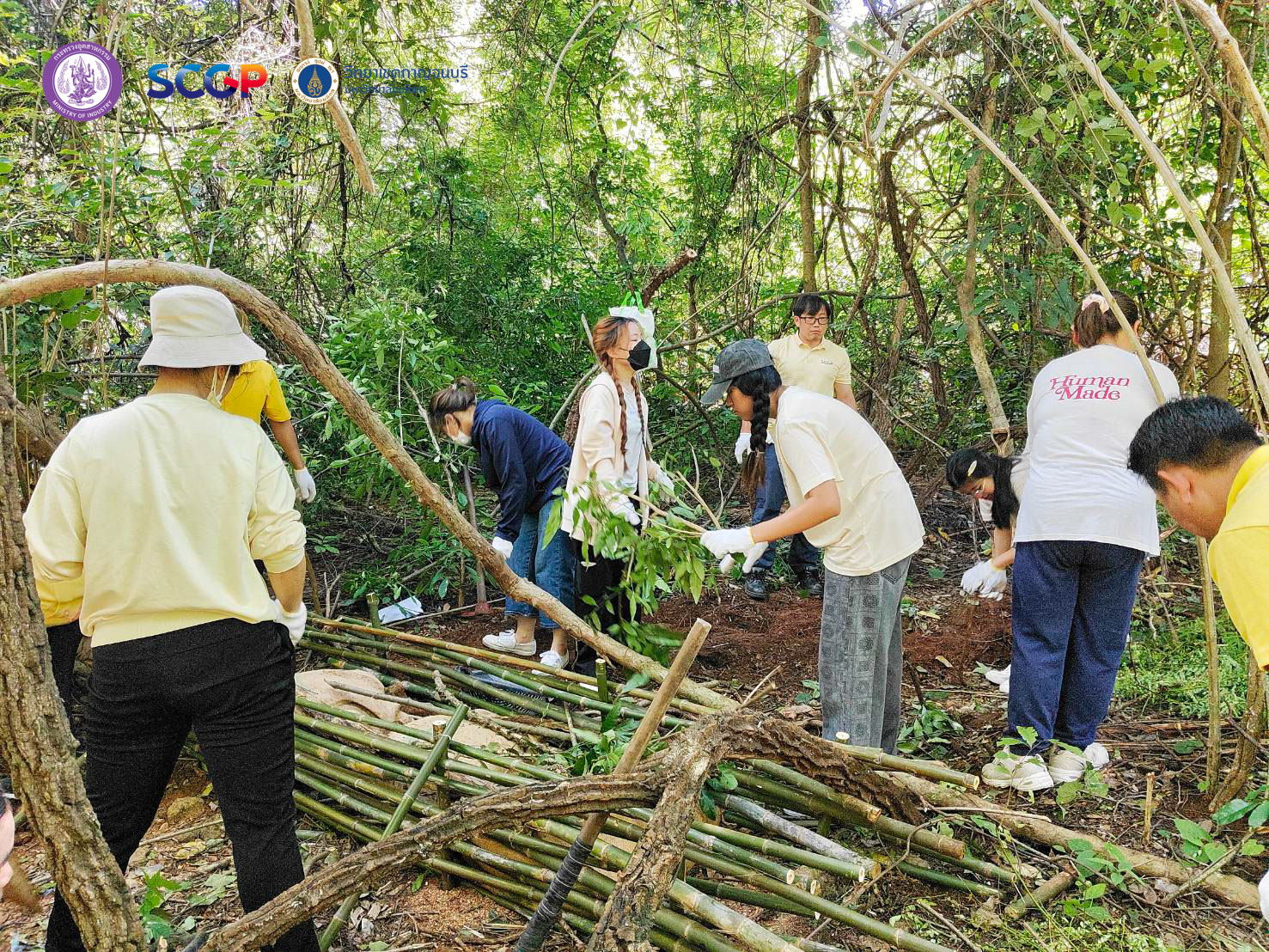Combating Soil Erosion through the Construction of Check Dams: The Success Story of Mahidol University Kanchanaburi Campus.
Check dam helps to preserve the soil, increase soil moisture, and bring benefits to the surrounding community and the environment.
Mahidol University Kanchanaburi Campus, located on a slope and hills in the Sai Yok district, has experienced soil erosion issues in the past. The problem was caused by heavy rainfall and flooding during the rainy season, which resulted in water currents eroding the ground and carrying soil and plant debris into the Sai Yok district, nearby government locations, residential homes, and the Khwae Noi River. This has caused distress to the community and erosion of the riverbank.
In an effort to address the issue, the Kanchanaburi Campus collaborated with Siam Cement Group Packaging (SCGP) Wang Sa La factory in 2010 to study soil degradation in the area and find ways to resolve the problem. It was determined that the construction of check dams would be necessary to control the flow of water, reduce its intensity, and prevent soil erosion by allowing water to seep into the ground. The check dams are not intended for water storage due to the rocky and limestone mountain terrain, but rather to increase the long-term moisture of the forest floor. The dams are constructed using natural materials, such as bamboo, wood, stones, and rocks, that can decompose naturally without affecting the ecosystem.
Currently, there are 427 check dams in total, as shown in the accompanying figure 1. A research project was carried out by the Kanchanaburi Campus in collaboration with Mahidol University to monitor the natural resources in the area of the sustainable check dam. Funded by SCGP, the project studied the undergrowth plants, ecosystems, potential for increasing water sources for wildlife, and the direct and indirect impacts on the local community. The results of this research have resolved the problem faced by the Kanchanaburi Campus.
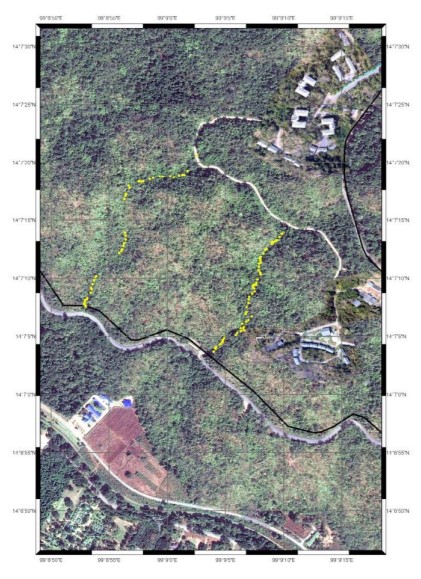
figure 1: position of 427 check dams
The frequency of annual flooding in the Sai Yok district, which used to cause inconvenience to the community, has gradually decreased since the construction of the check dams. The Kanchanaburi Campus continues to maintain and repair the dams every year to ensure stability and sustainability in preserving the environment. The research project, led by Dr. Thamarat Putthai, Associate Professor from the Faculty of Environment and Natural Resources at Mahidol University, revealed that the area's forest, previously mostly composed of rock layers, now has increased soil moisture due to the check dams' ability to retain water and reduce soil erosion and water flow during heavy rainfall. Camera traps have also shown a return of wildlife in the area along the check dam, demonstrating the richness and abundance of the area, particularly for endangered species. These findings are presented in the accompanying Figures 2-4.

Figures 2: The Siamese jackal from camera trap
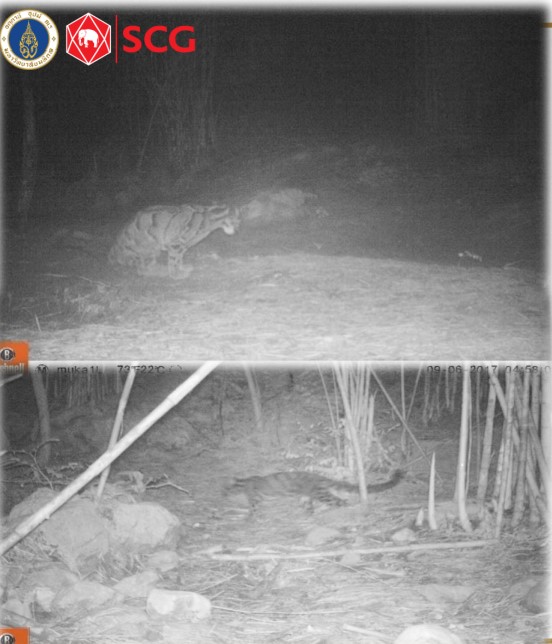
Figures 3: The Clouded leopard from camera trap

Figures 4: The leopard cat from camera trap
-
การสร้างฝายชะลอน้ำhttps://ka.mahidol.ac.th/th/sdgs-check-dam/➞
-
สร้างฝายชะลอน้ำโรงเรียนบ้านวังโพธิ์https://www.facebook.com/share/p/1822sQXCZT/➞
-
นักศึกษาพิเศษ จัดกิจกรรมสัมพันธ์ศึกษาเรียนรู้ การสร้างฝายชะลอน้ำhttps://www.facebook.com/share/p/1DgZkkwQH3/➞
-
SCG โรงงานวังศาลาและเครือข่ายร่วมสร้างฝายชะลอน้ำhttps://www.facebook.com/share/p/1BMXMc5w7S/➞
-
SCG โรงงานวังศาลาร่วมสร้างฝาย และhttps://www.facebook.com/share/p/15dfHKvUB6/➞
-
โรงเรียนปากเกร็ด ร่วมสร้างฝายชะลอน้ำhttps://www.facebook.com/share/p/1EvScrjU2i/➞
-
กิจกรรมจิตอาสา “สร้างฝายชะลอน้ำ 92 ฝาย 92 พรรษา”https://www.facebook.com/share/p/1DfFuADJkc/➞
-




